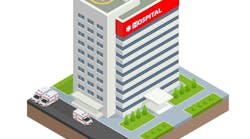LONDON (AP) - One picture shows a bombing suspect running through an Underground station after his explosives failed to detonate. Another captured a second suspect standing on the upper floor of a double-decker bus. London's ubiquitous closed circuit television cameras have provided police with crucial leads in their investigations of this month's attacks on the city's transit system.
Police have widely broadcast photos of all four suspects on the run after the July 21 failed attempts on three Tube trains and a bus. Authorities have already identified two.
With the closed circuit footage, Peter Clarke, head of the Metropolitan Police anti-terrorist branch, was able to give the country on Monday a remarkably detailed picture of how the terrorists escaped in the hope that residents of the neighborhoods they fled through could provide clues.
One popped out of the back window of a train, ran down the tracks, and then through backyards and past the BBC building before disappearing. Another evaded people chasing him as he ran out of Oval station and was last seen on Tindall Street in south London.
With the suspects' photos displayed behind him, Clarke appealed to shopkeepers for information on whether any of the four men had purchased the distinctive plastic food containers used to house their bombs from them. It was part of a general appeal to the public to come forward if they recognize the men.
London's Metropolitan Police say they've examined 15,000 closed circuit tapes so far.
Detectives ''will now be studying hundreds and thousands of hours of tape,'' said John Carnt, a former London police detective superintendent with expertise in counterterrorism. ''They'll be particularly interested in any other people they spot the suspects associating with.''
CCTV footage of the four bombers who killed themselves and 52 others on July 7 was hugely important in helping police identify those suspects as well.
Within days of the bombings, police said they had images of the men gathering in King's Cross station about 20 minutes before three of them struck; the other blew himself and a bus up an hour later.
There are an estimated four million CCTV cameras across Britain, according to the Home Office. They are on the streets and in shopping malls, parks, offices, schools, airports and parking lots _ among many other locations. News reports often cite an estimate that the average Briton is filmed by about 300 cameras every day.
CCTV came into widespread use in Britain in the early 1990s, after two deadly Irish Republican Army bombings in London's financial district.
Their use has raised some civil liberties concerns.
Gareth Crossman, of the rights group Liberty, said CCTV was sometimes misused to invade people's privacy and argued that its use should be more tightly regulated.
Still, Britons generally seem unconcerned about the cameras' presence, and they play a key role in all manners of law enforcement, even photographing license plates to monitor payments of the toll charged for driving in the city center.
Many experts say CCTV has been disappointing at its initial goal of deterring crime but has been quite helpful in solving those that have already occurred.
The London bombings aren't the first time CCTV has given Britons vivid images of crime _ cameras in a shopping mall near Liverpool captured two 10-year-old boys leading toddler James Bulger to his 1993 murder, a picture that was frequently reprinted and broadcast.

